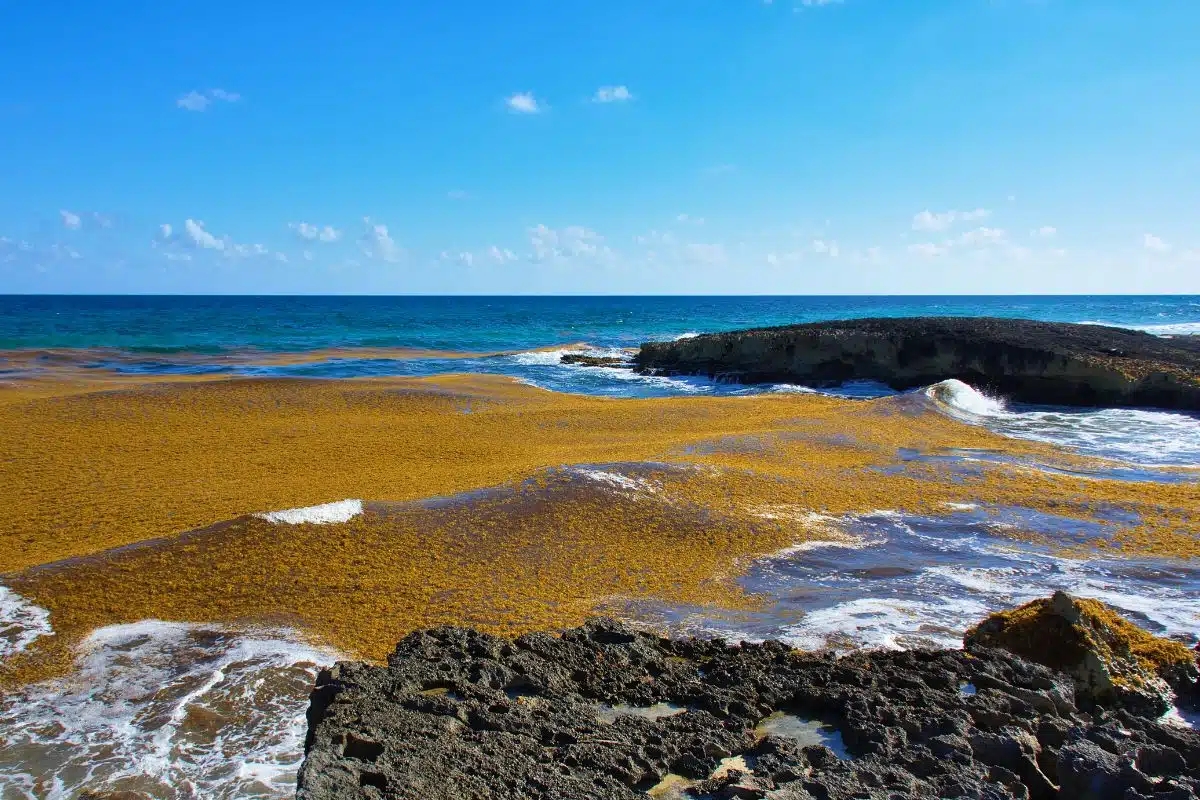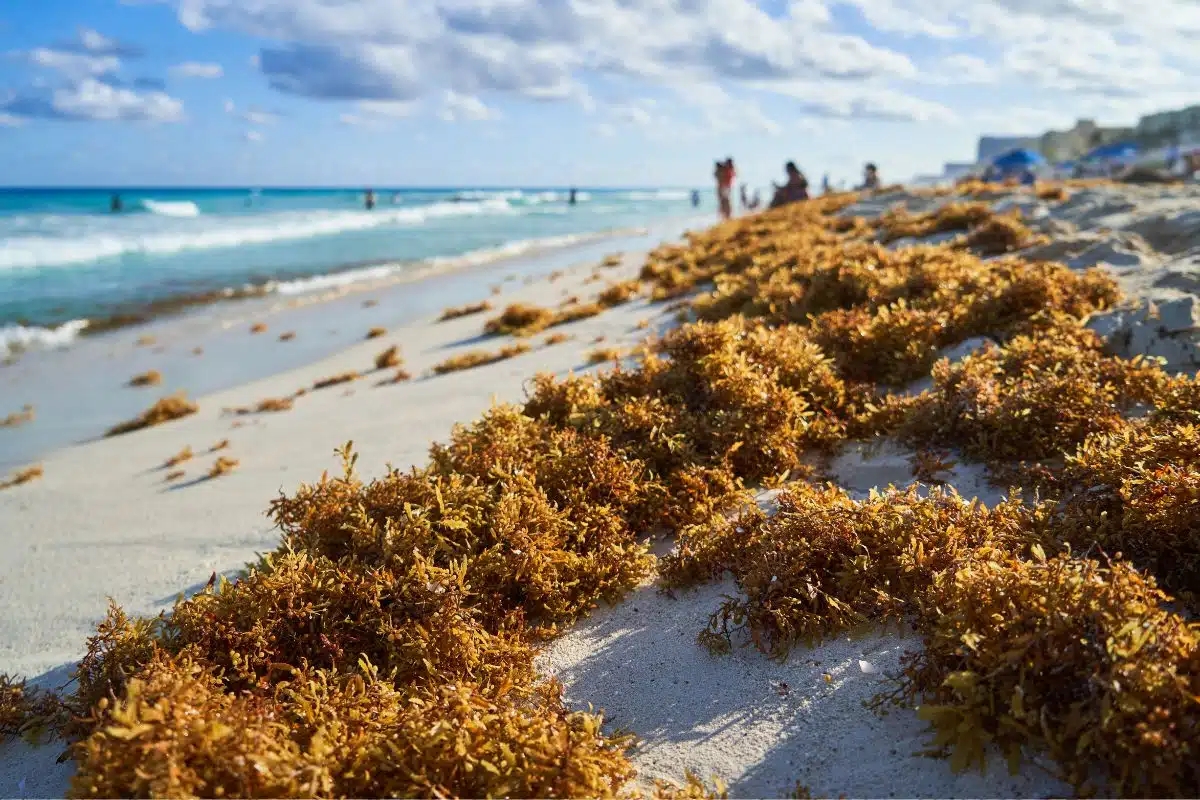Scientists have discussed the implications of a massive belt of seaweed spanning 5,000 miles over the last few months. Strong currents are pushing the massive blob westward from the Sargasso Sea. It is now making its way towards Florida, the Caribbean, and Mexico.
Researchers say that the mass has shrunk. According to some estimates, it reached 13 million tons. The mass reached a record in March, but has since shrunk between April and may by 15%.
The Great Atlantic Sargassum belt (GASB), which stretches from the west coast of Africa to the Gulf of Mexico has made headlines in recent months.
Researchers who monitor the growth and movement of sargassum have stated that this massive decline is unprecedented. This significant drop has not been seen since the first year that the GASB was tracked.
The report shows that the majority of the reduction in sargassum was far away from U.S. coasts.
The sargassum will begin to decline in June and this will reduce the pressure on the Florida Keys, the east coast of Florida, and other areas of Florida. Researchers who follow the GASB report that the annual sargassum cloud decreases every year in the late summer.
It is made up of gas-filled structures that keep the brown algae buoyant. This seaweed can be found in the Caribbean, Gulf of Mexico, and Southeast Florida. It is also not recommended to swim near it because it can cause skin irritation and a rash.
The seaweed is not harmful to humans but it helps shoreline stability, is home to many marine species, and helps erosion. It also provides nutrients for beach plants.






